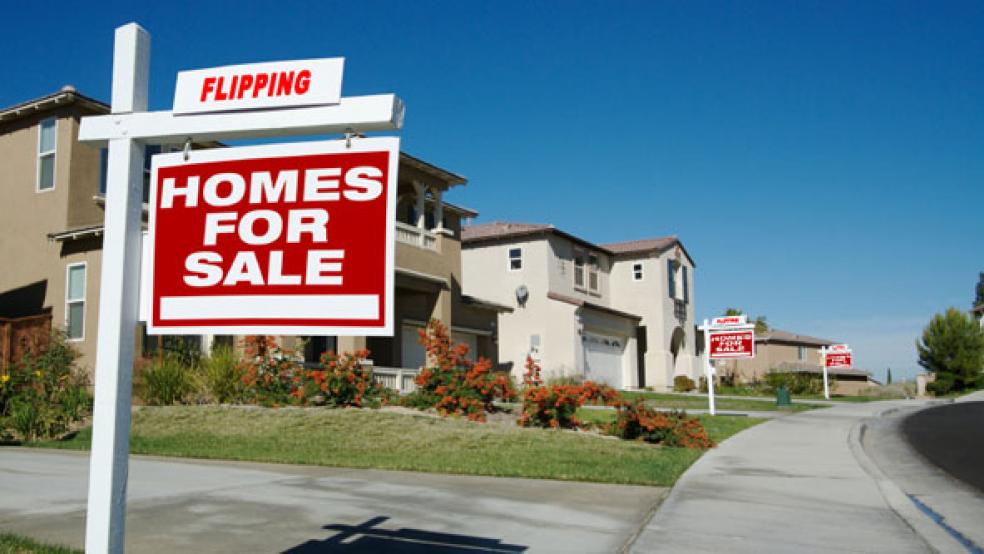At the peak of the housing bubble, a number of reality shows appeared on cable television that featured real-estate speculators who bought distressed properties and made enough improvements to sell them quickly at a sharp profit.
Called “flipping,” the entertainment industry glamorized the quick-profit practice that helped fuel a spectacular rise in housing values – and made the crash worse than it otherwise might have been. Flipping has since become a reviled practice, a symptom of an irrational and irresponsible market, not to mention the negative political connotations of speculators in general as gas prices rise rapidly yet again.
So why has the Obama administration decided to bail out the speculators in his latest iteration of a housing policy? Bloomberg reports that the White House, obviously frustrated with the lack of success from their Home Affordable Modification Program (HAMP), has expanded the latter to include real estate consortiums for the first time.
This coming May, owners can apply for relief for up to four mortgages by either having the loans restructured or principals reduced with taxpayer subsidies to sweeten the deal for lenders. This represents a sharp change from the Obama administration’s original political justification for continuing intervention in housing markets, which rested on the need to reduce the pain felt by Main Street after having spent so much bailing out Wall Street.
What is the new rationale? Timothy Massad, Assistant Treasury Secretary for Financial Stability, told Bloomberg that the White House now wants to take a neutral view on owner profiles in favor of a policy that focuses on reducing vacancies. “Given where we are today, more and more people recognize that vacant properties are a problem no matter how they became vacant.” Perhaps that may be the publicly offered reason, but the likely motive is the continual drop in home values – and the desire to position Obama as the man who “fixed” the housing crisis in the next election.
The Case-Shiller index report from December, released a little over a week ago, showed home prices declining 4% from a year earlier. The CS-20 price index has now dropped below its level when Barack Obama took office despite tens of billions of dollars spent by the Obama administration in attempts to shore up home values, especially with HAMP.
There is a simple reason for this – the bubble created irrational home values, and the bubble has not entirely deflated. The price index now sits at the late 2002 level, a time when home values had detached from their traditional anchor to inflation but had not yet escalated sharply. Home values will likely continue to decline until they reach a point where they would otherwise have been without massive government intervention fueling the lending markets -- close to the 1998-99 price level adjusted for inflation.
Obama has thrown a series of temporary, gimmicky policies at this problem to avoid catching the blame for a natural return to market rationality. Tax credits for first-time homebuyers expired, were renewed, and then expanded to all buyers. All that produced was a short burst of buying, and both sales and values dropped in the immediate aftermath of the expiration of these gimmicks.
HAMP attempted to rescue homeowners who spent too much on their houses but could still afford the payments. The real foreclosure risks resulted in massive vacancies. Even to the extent that HAMP helped qualifying individual owners, it has had no effect in reversing the inevitable revaluation of over-valued property.
At least the rationale for government intervention on behalf of individual homeowners made political sense, if not fiscal or market sense. The federal government, with backing from congressional Democrats, had encouraged individuals to buy rather than rent, and distorted the market so that they could get mortgages that their families couldn’t afford. Even though individual homeowners should think of their houses as investments – and investment carries risks – it became bad politics to remind people of this simple fact over the last three years.
That, however, does not apply to speculators. They didn’t buy houses to shelter their families; they bought them specifically as investments, and were rewarded with handsome profits in the bubble they helped fuel. Those investments carried significant risks, and reversals in this field are hardly unprecedented, as anyone who lived through the collapse of the real-estate market in Southern California in the late 1970s would recall.
What possible reason could there be for taxpayers to subsidize the losses of people who treated real estate as a speculative investment market and bet badly? Most of these taxpayers acted responsibly in buying their own homes or choosing to rent rather than overextending their finances. Obama proposes to penalize people who acted responsibly by making them cover the losses of those who acted irresponsibly, and who as a group profited handsomely from those bets until the bottom fell out in 2008.
Further government intervention to rescue irrational home values created by previous government intervention is a fool’s errand in any case. However, asking taxpayers to rescue speculators sounds like “Flip This Bailout.”






